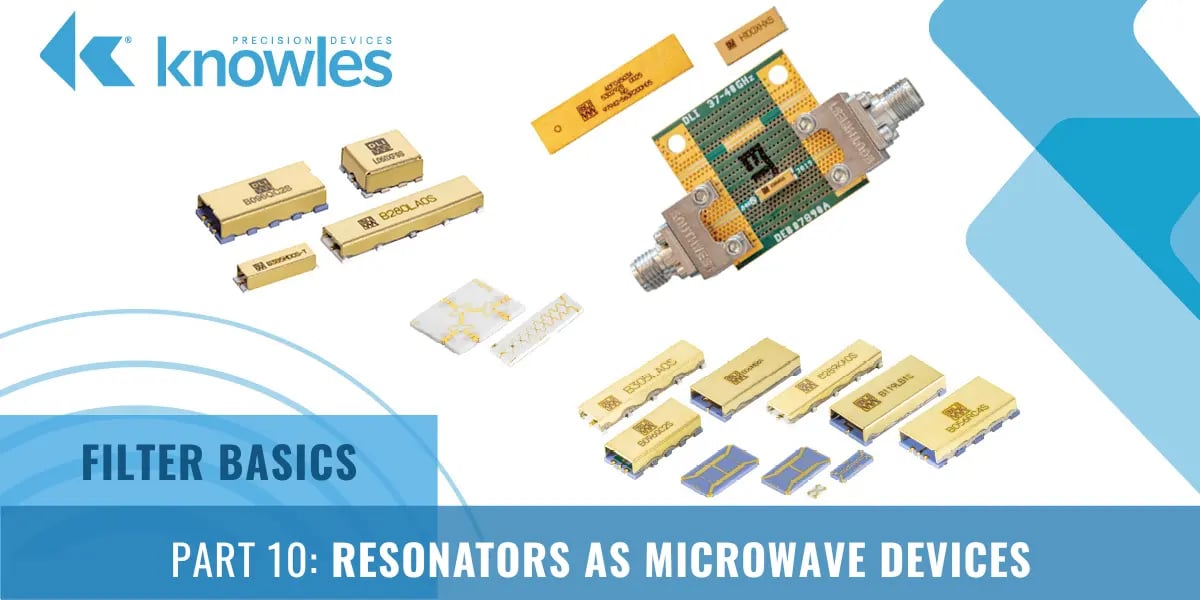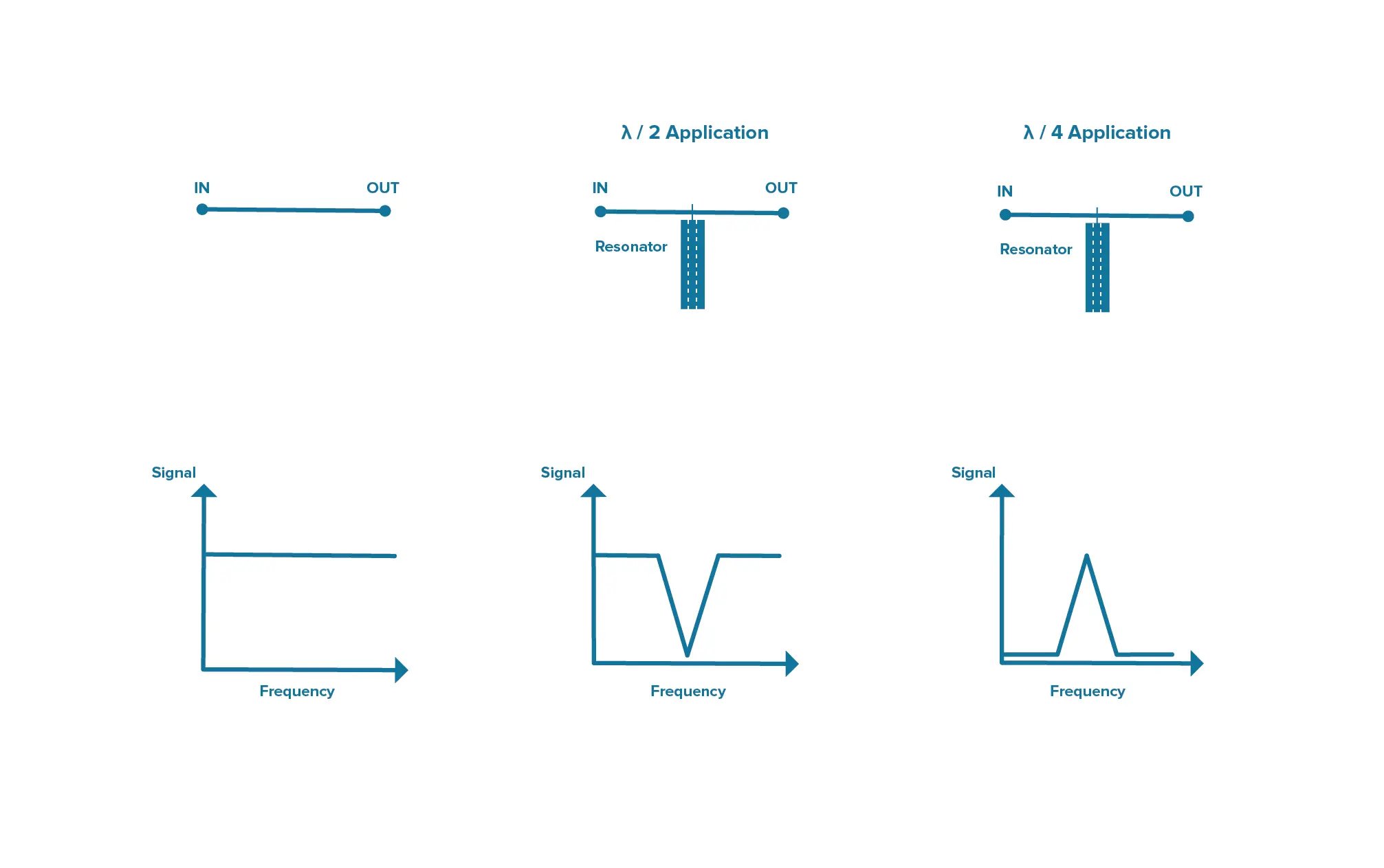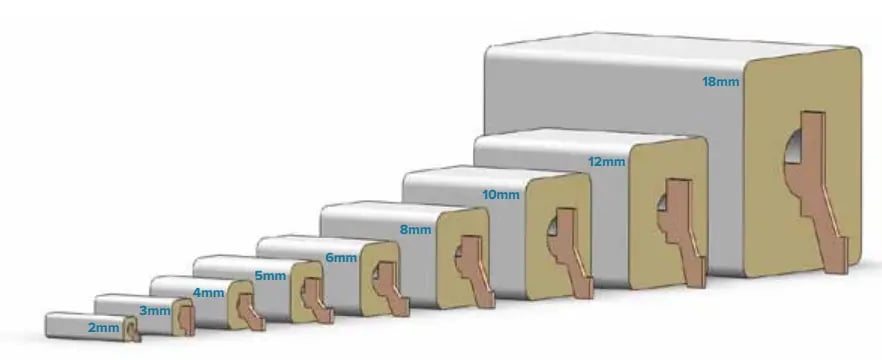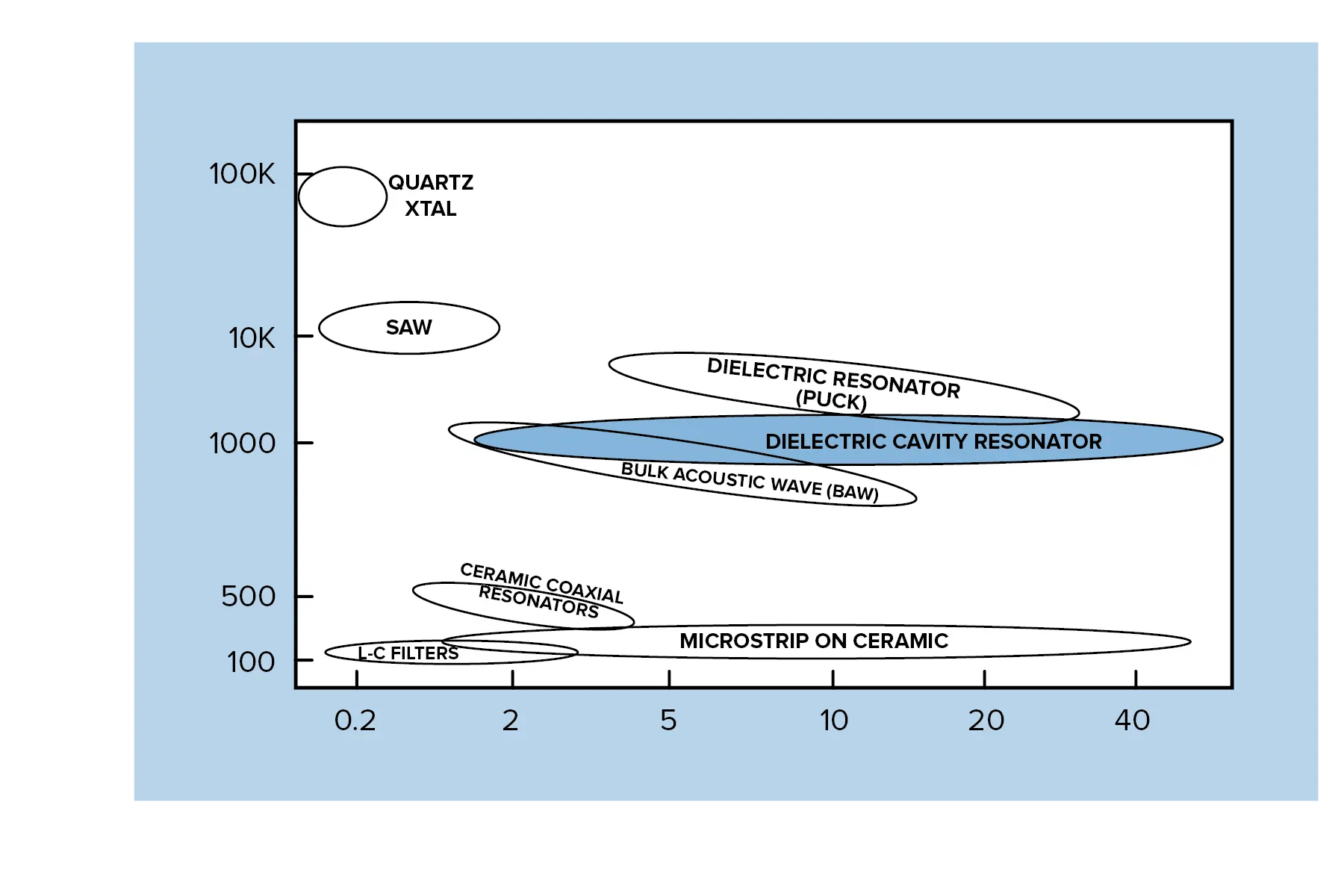To help customers with filter selection, we generally provide a lot of information on what our filters can do. But in this new Filter Basics Series, we are taking a step back to cover some background information on how filters do what they do. Regardless of the technology behind the filter, there are several key concepts that all filters share that we will dive into throughout this series. By providing this detailed fundamental filter information, we hope to help you simplify your future filtering decisions.
In part 10 of this series, we discuss how resonators function as a microwave device and dive deeper into specifications for ceramic coaxial and dielectric resonators specifically.

Resonators are essential building blocks for bandpass filters as these components are designed to store frequency-dependent electric and magnetic energy. A simple resonator, such as an LC resonator, can store the frequency-dependent electric energy in the capacitance (C) and magnetic energy in the inductance (L). Resonant frequency of a resonator occurs when the energy stored in the electric field is equal to the energy stored in the magnetic field. In this post, we’re going to look more closely at two different types of resonators used in filters – coaxial ceramic and dielectric.
Coaxial Ceramic Resonators
If you’ve ever had cable television service, then you have used a ceramic coaxial transmission line. The transmission line is constructed using a ceramic rectangular prism with a coaxial hole running through the center. More specifically, the ceramic coaxial resonator is a transmission line resonator that operates in transverse electromagnetic (TEM) mode. TEM mode has both E- and H-field components at right angles to the z-direction and no signals in the direction of propagation as shown in Figure 1.

Figure 1. How electrical and magnetic energy travel in a coaxial transmission line.
Each coaxial resonator transmission line is cut to a specific length based on the wavelength of the frequency of interest. To make the lines shorter, ceramics with specific dielectric constants are used to shrink the wavelength to the frequency of interest. The dielectric used, length of the line, and metallization will dictate the performance at the frequency of interest. Coaxial resonators can be supplied as λ/4 resonators with one end fully metallized (i.e., shorted) and the other end open, fully metallized on both ends, or as λ/2 resonators with both ends open as shown in Figure 2.

Figure 2. How a signal will be impacted depending on the type of ceramic coaxial resonator added.
At Knowles Precision Devices, we design high Q ceramic resonators made with Class I dielectrics to operate in UHF, VHF, L, S, and C bands and in microwave frequency ranges, covering a total frequency range of 300 MHz to 5 GHz. A sampling of our ceramic coaxial resonators is shown in Figure 3.

Figure 3. A variety of our tabbed and no-tab ceramic coaxial resonators.
Some of the other key features of our range of ceramic coaxial resonators that are built at our facilities in the US include the following:
- Standard frequency tolerances ranging from 0.1 percent to 1.0 precent, but custom tolerances are available
- Resonator profiles ranging from 2mm to 18mm with custom profiles available (Figure 4)
- Excellent temperature stability
- A thick film silver coating for excellent Q and solderability
- Superior silver adhesion with pull strengths greater than 20 lbs

Figure 4. The range of sizes we make for our catalog coaxial resonators.
For surface mount devices (SMDs) tabs, tables, or slotted no-tab configurations are available, with our tabless version eliminating solder reflow issues and tab misalignments. Our resonators are pre-tuned to your specified frequency with a choice of tolerances and screened to ensure customer specifications are met. However, the self-resonant frequency (SRF) can be tuned by removing the silver metallization at either the open end or the shortened of the resonator to either increase or decrease the SRF.
For filtering applications specifically, our coaxial resonators made with modern, high-performance ceramic dielectric materials are an excellent option for bandpass, band stop, narrowband, delay, and EMI filters. You can also learn more about our ceramic coaxial resonator technology and offerings in this recent blog post.
Dielectric Resonators
Dielectric resonators are a kind of ceramic cavity resonator that work by confining frequencies inside the resonator material as a result of an abrupt change in permittivity at the surface, causing RF waves to bounce back and forth between the sides. The Knowles Precision Devices DLI brand includes a family of patented high-Q ceramic cavity resonators that offer an ideal solution for high-performance, low-cost microwave or mmWave oscillators with frequencies ranging from <1GHz to >67GHz (Figure 5).
Figure 5. How various resonator types perform over different frequencies.
As shown in this graph, these resonators can reach much higher frequencies than alternative technologies. These resonators are also fully shielded and designed on our temperature stable, high dielectric constant ceramics. Some of the key specifications that can be built into our range of DLI brand ceramic dielectric resonators include the following:
- High Q, (up to 2000) over the 2GHz to 40+GHz range, offering 200 to 500 percent better Q over comparable technologies
- Low loss, very low phase noise oscillators
- Coupling capacitors can be integrated and tailored to the desired tuning range of the oscillator inside the package
- Fully shielded – no large expensive housings or tuning screws
- Frequency stability to < 3ppm/°C
- Ready for automated assembly
- Do not exhibit aging characteristics
- Q leverage improves with increasing frequencies
- Do not out-gas due to density of the material
- High reliability thin film gold metallization is employed and frequency tolerances as low as 0.1% are attainable.
Our dielectric resonator designs can be customized for either solder-surface mount or chip and wire applications as well.
A selection of our resonators are available through RF & Microwave Component Distribution and DigiKey.
In Part 11, we will explore what S-parameters are and what S-parameters can tell you about the performance of a filter.
Ready to take a deeper dive in the fundamentals of RF Filters? Download the comprehensive Filter Basics guide today.


